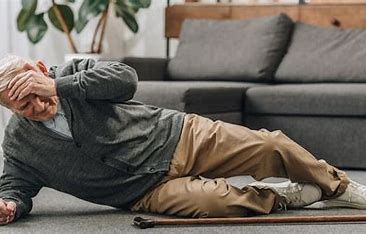No More Falls
How to keep our home environment safe to avoid falls.
5/21/20254 min read


Did you know that, according to the Centers for Disease Control, 1 in 4 older adults report falling every year? Did you also know that most falls are preventable? I tease my patient's all the time telling them they aren't allowed to fall because that is too much paperwork for me. But, the reality of the situation is, falls happen. And they happen a lot. So, what steps can we take to keep this from happening to you?
Lets take a look at some simple environment considerations that can make your home a safer place...
Rugs. Everybody loves their rugs. I get it. But, the truth of the matter is that they really are a hazard. Rugs can slip around, and they are very easy to trip over. This is especially true if you are like the majority of my patients who like to shuffle their feet when they walk. If you use a walker, the back legs can easily be in hindsight and catch on the edge of the rug. Unless you are just absolutely married to the throw rugs around your home, limiting them or removing them altogether is really the best choice.
Cords. You would be surprised at how often people have cords running along the walkways of their homes. This is a major tripping hazard. Try to keep cords out of common walking paths. If this is completely unavoidable, have them tacked down well so that you minimize the risk of tripping over them.
Clutter. It is so important to keep your floors free of extra, unnecessary objects. I'm just as guilty as everyone else of just kicking off my shoes, tossing a bed or couch pillow on the floor out of my way, or dropping a bag on the ground until I can get around to finding it's belongings a home. However, all of these things in our walkway just increase our risk of tripping and falling. Keeping our pathways and rooms free of clutter is a simple way to avoid ending up on the ground.
Lighting. Having good lighting in your house is important to help you see better where you are going. It can also make you aware if something has accidentally ended up on the ground in your way. At nighttime, having a night light of some sort on can help reduce your risk of falls while you head to the kitchen for that midnight snack, or get up to use the restroom.
Pets. We all love our four legged friends, they truly are the best. But, if your animals are anything like mine they always want to be under your feet and right in the action with you. Make sure you are using extra caution when you are walking around the home and have your furry family by your side.
Flooring. In a perfect home therapist world, all homes would have seamless transitions from room to room. Unfortunately, this is not the case. Most homes have flooring transitions moving from one type of floor covering to another. When we are walking quickly, or not quite picking our feet up properly with each step, our toes can easily catch on these changes in flooring, and we can have a fall. Make sure you are again taking your time whenever you approach these areas of your home.
Footwear. I know everybody loves a good pair of slippers. Especially ones that are easy to just slip right into every day. While they may be convenient and comfy, they may not be the best choice to help keep you upright in your home. Slippers that don't have a back on them, or are not fitting securely on your feet, can actually be a large fall hazard. It's okay to have a nice pair of slippers, but make sure they are supportive and fit your feet well so you can walk more safely. Another option if you don't love the idea of a good pair of shoes or slippers, is wearing socks with grips on the bottom. These can keep you comfortable in your home, while also helping to prevent you from falling.
Furniture. Be very conscientious of how you have your furniture arranged. Make sure you have wide enough pathways to get through, especially if you use a walker. Also, don't ever count on your furniture to be your stability to get around. In the therapy world we call this furniture walking. Too often I hear about a patient who put their hand on a chair or end table for support, only to have said chair or end table tip over, and down they also went. If you feel like you need to grab a wall or furniture to walk safely, you may want to consider the use of an assistive device such as a walker or cane for better safety instead.
Taking all actions you can to create a safe environment can help reduce your risk of falls. However, we know falls can and will sometimes happen. At the end of the day, always have a plan. Do you live alone, or are you home alone frequently? Always be prepared for the worst-case scenario. Consider getting a lifeline you can keep on your body in case you do fall and need to call for help. The nice thing about many lifelines now is that they can actually detect if there is a sudden velocity change when you have a fall. If for some reason you end up unconscious and the system detects this, they will call out to you to make sure you are okay. If they don't get a response from you, they will automatically send the medical response team to check on you. If that doesn't interest you, or is not feasible, have a cell phone you keep on you. Place it either in a pocket, a belt bag, or perhaps the basket of your walker. One of the things that breaks my heart the most as a home therapist is hearing stories of patients who fall and lay on the ground of their home for an extended period of time because they cannot get back up and don't have any help. Don't let this happen to you. Always be prepared so that you can call for help in the unavoidable event that you do end up on the ground.
